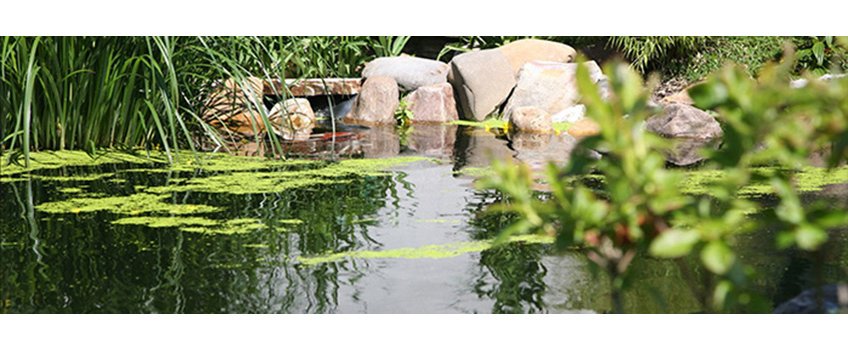Recommended levels for pond water
| Water parameter | Importance | Desired value |
| pH value | All creatures in ponds react sensitively towards pH value changes. A neutral (7) to slightly alkaline (8) pH value is optimal for the pond inhabitants. Sudden pH value changes (such as rapidly sinking pH value) are very dangerous. | 6,5-8,5 |
| Total hardness (GH) | It is formed by the entirety of alkaline earth ions and serves as a mineral source for all pond inhabitants. | 6-16°dGH |
| Carbonate hardness (KH) | The KH is defined by the hydrogen carbonate ion concentration in the water. Sufficiently high KH (at least 5°dKH) reliably buffers dangerous pH value variations. | 5-10°dKH |
| Oxygen level (O2) | Essential for all pond inhabitants for breathing, but also important for breakdown processes. Saturation changes according to the time of day (deficiencies mainly at night and in the morning) due to photo synthesis. Good water agitation and cooler temperatures support saturation. | > 4 mg/l (better > 6 mg/l) |
| Ammonium/Ammonia (NH4/NH3) | Waste and breakdown product, a component of the nitrogen cycle and at the same time a dangerous fish poison. Good biological activity provided, ideally not detectable. | < 0,5 mg/l (better 0) |
| Nitrite (NO2) | Waste and breakdown product, a component of the nitrogen cycle and also a dangerous fish poison. Good biological activity provided, ideally not detectable. | < 0,5 mg/l (better 0) |
| Nitrate (NO3) | Waste and breakdown product, a component of the nitrogen cycle. Hardly toxic plant nutrient that, however, supports algae growth in higher concentrations. | < 50 mg/l |
| Phosphate (PO4) | Waste and breakdown product. Hardly toxic plant nutrient that, however – especially in higher concentrations –, is the most important support for uncontrolled algae growth. | < 1 mg/l |
| Copper (Cu) | Heavy metal already toxic in low concentrations, but also essential trace element as well as effective agent in some treatments and biocides. | < 0,1 mg/l |
